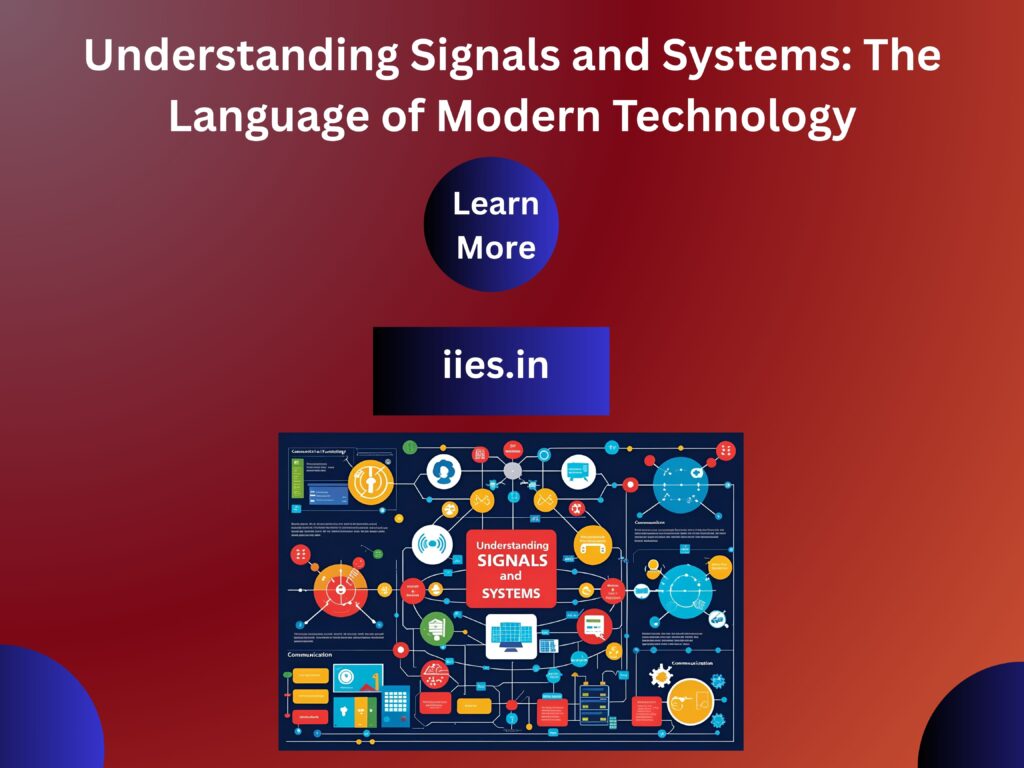What Are Signals?
A signal is defined as a time-dependent quantity that transmits information. It could be as simple as a sine wave or as complex as a voice recording.
Common Types of Signals:
- Audio signals (for instance, your voice during a phone call)
- Visual signals(e.g., pixels in an image)
- Radio signals(used in wireless communication)
- Data from sensors (such as temperature, pressure, or motion sensors)
Signals can be categorized in several ways:
|
Type
|
Description
|
Example
|
|
Continuous-time
|
Characterized by being defined at every instant in time
|
Analog audio, represented by voltage signals
|
|
Discrete-time
|
Defined at specific time intervals
|
Digital recordings, sampled data
|
|
Periodic
|
Repeats after a fixed interval
|
Sine waves, clock signals
|
|
Aperiodic
|
Non-repeating
|
Human speech, random noise
|
What Are Systems?
A system is a process or device that takes one or more input signals and produces one or more output signals. Systems transform signals—amplify, filter, compress, encode, or otherwise modify them.
Examples of Systems:
- Audio equalizer (modifies bass and treble)
- Video compression algorithms (like H.264)
- Radar systems in autonomous vehicles
- Artificial intelligence neural networks process signals such as images or text.
Key Concepts in Signals and Systems
- Linearity and Time-Invariance
- Linear: The system’s output for a combination of inputs equals the combination of outputs for individual inputs.
- Time-Invariant: The system operates consistently, irrespective of the timing of the input application.
These properties make systems predictable and easier to analyze.
- Impulse Response and Convolution
- An impulse is a signal that contains all frequencies.
- The impulse response describes how a system reacts to this input.
- Convolution is the mathematical tool used to compute the output of a system given its input and impulse response.
- Frequency Domain Analysis
- Signals can be represented in the frequency domain using Fourier Transform.
- This allows us to analyze the spectrum of a signal—crucial for filtering, modulation, and compression.
- Sampling and Reconstruction
- In order to change a signal from analog to digital, we sample it at uniform intervals.
- According to the Nyquist Theorem, the sampling rate must be at least twice the highest frequency in the signal to avoid information loss.
Real-World Applications
Signals and systems are everywhere:
- Audio Enhancement: Minimizing background noise in hearing aidsCommunication Systems: 4G/5G signal modulation
- Image Processing: Edge detection in computer vision
- Control Systems: Temperature control in smart thermostats
- Biomedical Engineering: ECG signal interpretation
Why Should You Learn Signals and Systems?
If you’re diving into fields like:
- Electrical and Electronics Engineering
- Digital Signal Processing (DSP)
- Machine Learning and AI
- Telecommunications
- Embedded Systems
…then understanding signals and systems is essential. It’s the theoretical bedrock for how we interpret and manipulate real-world information using mathematical models.
Final Thoughts
Signals and systems may sound abstract at first, but they’re deeply woven into the fabric of modern life. From the music we stream to the tech in our pockets, mastering this subject unlocks a deeper understanding of how the digital world communicates, senses, and responds. The Indian Institute of Embedded Systems (IIES) is a renowned institution that offers top-notch education and training in the field of embedded systems. With its comprehensive curriculum and experienced faculty, IIES is a leading choice for individuals aspiring to excel in this domain.

